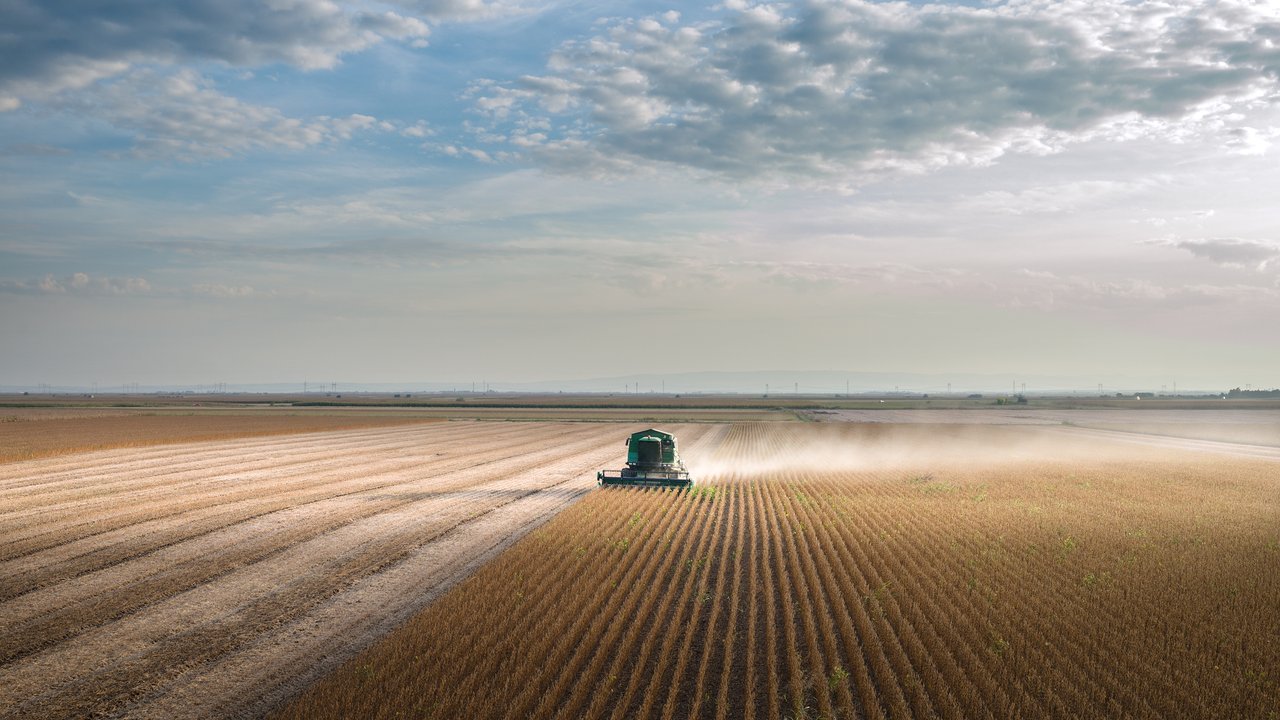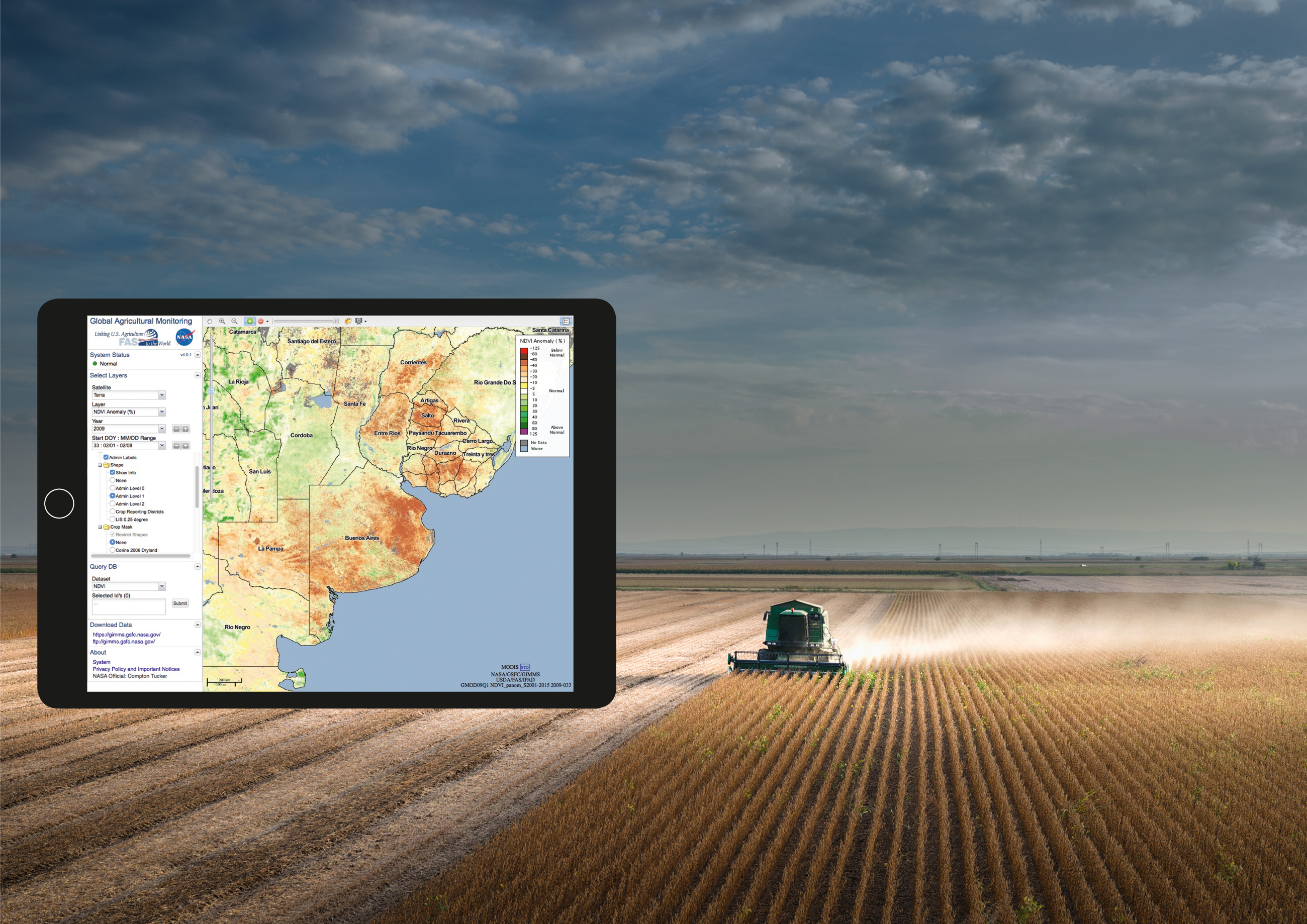
In collaboration with the ag-tech start-up S4, Munich Re has developed an agricultural cover that can automatically determine a loss with the help of satellite data.
Successful management of agriculture risks in farm production is becoming increasingly crucial. With an estimated global premium income of around US$ 30bn in 2016, and average annual growth rates of 20%, the volume of agriculture insurance has quadrupled since 2004. But in many instances, standard crop insurance and its method of determining each loss individually is simply not practicable. This is particularly true in emerging and developing countries, where there is no data for individual yield insurance, or the available data is not transparent enough. In such situations, index covers based on a yield index or on weather index data offer a simple and inexpensive method of protection. For example, by using a rainfall index from a representative weather station to determine a loss, an insurance company saves costs on complex loss appraisal in the field and can compensate insureds much more quickly.
Innovative cover against drought losses
The use of remote-sensing systems opens up possibilities for entirely new product designs. Munich Re is collaborating in this area with the Argentinian start-up S4, which specialises in the ag-tech market. The company focuses on the development of data-based analysis tools for agriculture. The tools are intended to improve agricultural yield and manage risks more efficiently. When allied to insurance expertise from Munich Re, these tools can be put to an increasing number of uses. One example is an innovative solution with which soybean farmers in Argentina can protect themselves against the impact of drought. It was originally designed as a marketing instrument for a seed and herbicide manufacturer who wanted to refund the cost of seed to customers if their crops failed. This kind of protection is now opening up further areas of application.
A major obstacle in developing index-linked insurance products lies in obtaining reliable and customised data on the occurrence of a loss. To address this problem, S4 has established a vegetation index for different regions (counties) in Argentina. It was designed to ensure there was a high correlation with the yield, so that it would provide a good approximation of the actual soy harvest. The crucial factor for determining a loss is how this index develops in a particular county. If it is below a specified trigger, farmers in the county receive compensation, irrespective of the actual harvest situation in their fields. To make the cover as transparent as possible, the current values of the vegetation index for the different counties are published separately on the Rosario Futures Exchange (ROFEX).

Breaking new ground
Many obstacles to surmount
In order to develop a reliable product, a suitably long time series of satellite images needs to be compared with the actual harvest yields on the fields. One prerequisite for this is that the crop that has been planted is recognisable, which is only possible with a relatively high spatial resolution, in conjunction with the appropriate computing capacity.
Another important factor with index calculation is the point in the vegetation period when the satellite images were taken. There is little information in the EVI from the fields shortly after sowing. However, between four and eight weeks before the harvest, the plants are at the peak of their vegetation phase. At this stage, they provide a very good indicator of the forthcoming crop yield.
Argentina is the perfect market for satellite-based index insurance because soy is grown over large areas there. The situation is quite different in Mexico or India, for example, where different crops are planted in relatively small areas. In this case, any insurance relying on a vegetation index quickly reaches its limits due to the lack of informative data. A further drawback is that crop losses from hail, pests, inundation and storm surge that occur after the vegetation index has been determined are not considered with this cover. S4 therefore developed an additional flood trigger for the harvest period. This is also based on satellite data, and reflects the proportion of flooded land in a county. This means that the bulk of potential agriculture losses are now covered.
What happens if the satellite breaks down?
One problem with remote sensing using satellites is the sudden failure of a system for which there is no quick replacement. Missing data on the progress of vegetation growth cannot be retrieved at a later date, so that alternatives need to be provided in this situation for index-based insurance products.
In the case of the Argentinian cover for soy, the data comes from two separate NASA satellites (Aqua and Terra with a moderate resolution imaging spectroradiometer – MODIS), which are highly unlikely to break down at the same time. But they have a limited life cycle because of the fuel required to correct their orbits. NASA currently believes there is a good chance that both satellites can continue to operate into the early 2020s. Due to technical advances, the successor or successors to the two satellites will feature different sensors, whose data cannot be directly compared with existing datasets. This will affect both the resolution and the areas of the Earth’s surface that are regularly scanned. So at that point, recalibration of the existing time series will become an unavoidable necessity.
Fruitful collaboration
The cooperation with S4 proved beneficial for both sides right from the start. The project shows that innovation will come if you are open to new ideas. Especially for agriculture production risks, the combination of long-standing insurance expertise with the benefits of new technology and advancements in digitalisation is the perfect basis for successful risk solutions.
Cover for the soy crop in Argentina is now in its second season. There is also a pilot project in the USA for soy and corn. It is also hoped that the product can be expanded to Brazil, where there is significant market potential. Other potential target markets include Australia and Ukraine, where covers can also be sold directly through commodity traders and banks.
A crucial factor for the successful spread of trigger-based agriculture insurance is that the policyholders actually understand the way it operates and are clear about the unavoidable basis risk. Otherwise, insurers run the risk of being criticised or suffering a loss of reputation if they do not pay out in cases where the trigger did not come into effect despite individual crop losses.
Related Topics
Newsletter
properties.trackTitle
properties.trackSubtitle

